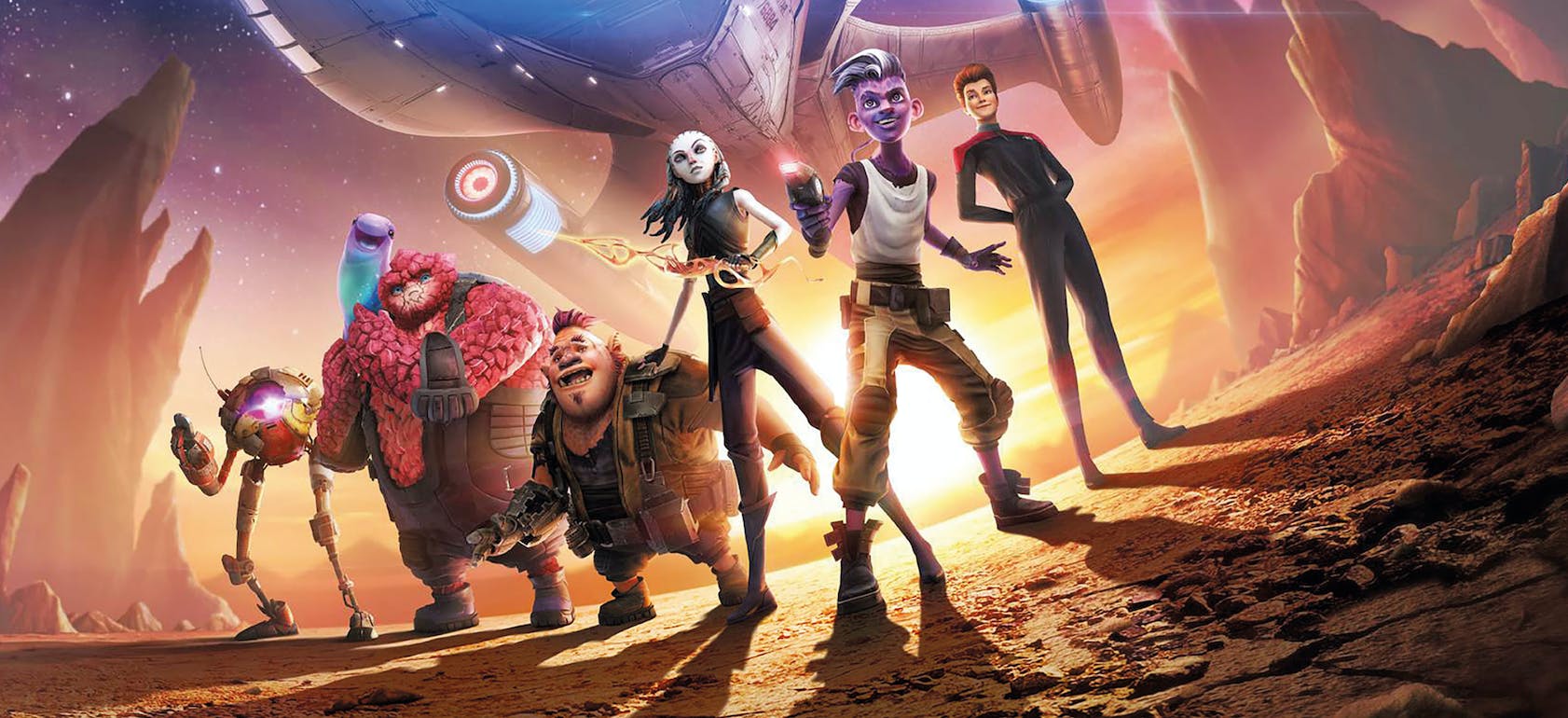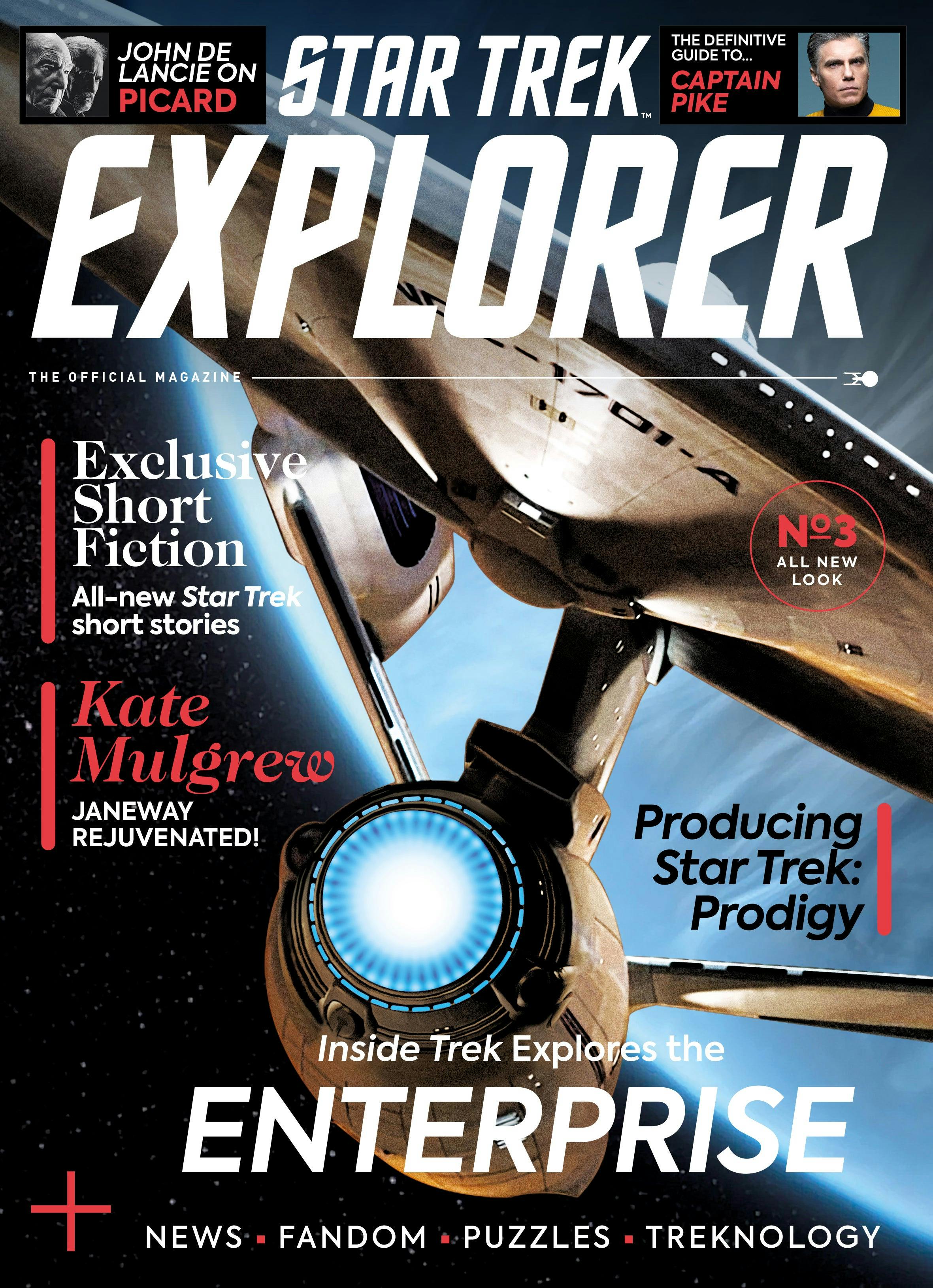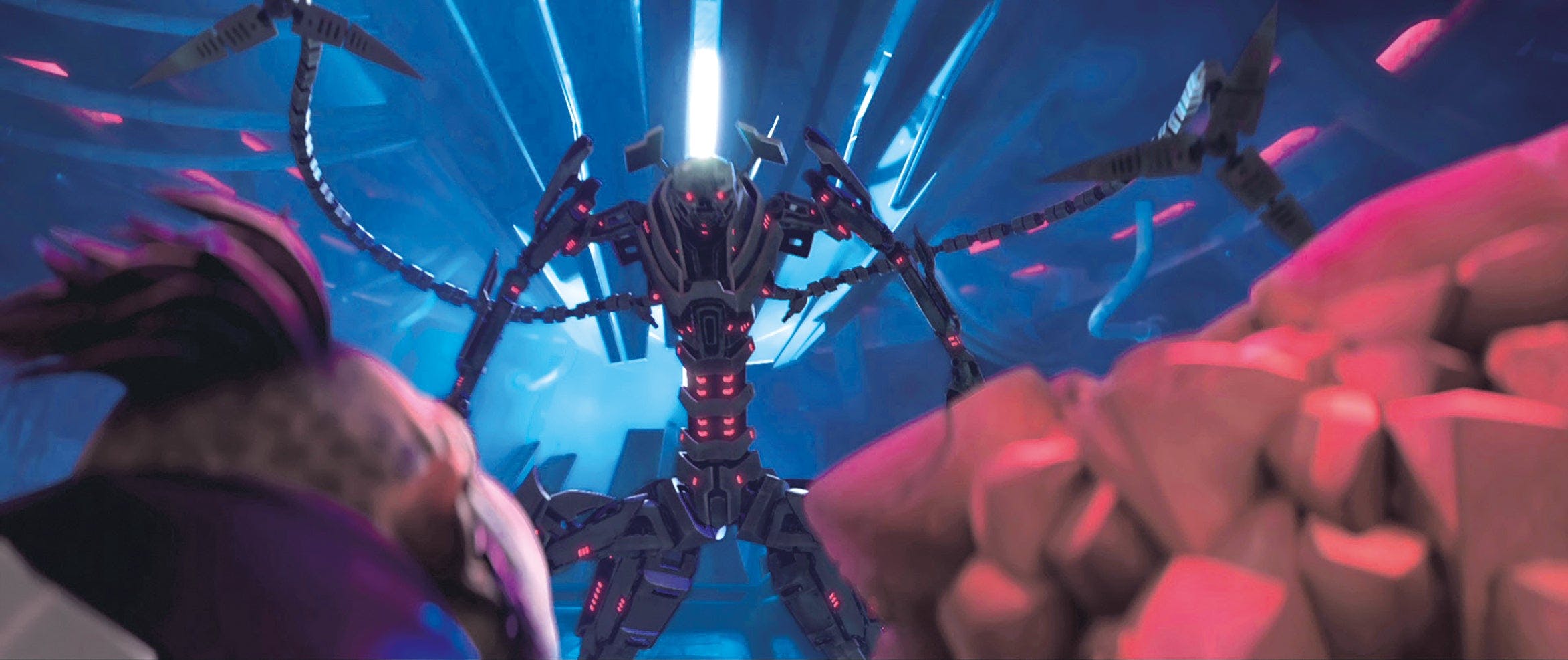Published Jun 27, 2022
EXCERPT: How to Raise a Prodigy
In Star Trek Explorer #3, Kevin and Dan Hageman and co-producer Ben Hibon share how they brought Star Trek: Prodigy to life.

StarTrek.com
Star Trek: Prodigy is a singular series in the annals of Star Trek: not just an animated show utilizing cinema-quality CGI, but the first Trek production aimed squarely at kids. Co-creators The Hageman Brothers, Dan and Kevin, and co-executive producer and director Ben Hibon give Star Trek Explorer the inside scoop on Trek’s bold new venture.
Star Trek Explorer: Dan, as you were writing the show, which characters in the series did you find resonated with you the most?
Dan Hageman: I really connected with Dal, a guy who is brimming with confidence, but deep down there’s crippling insecurities. And especially going into a Star Trek show, I felt like Dal.
Take us through the process and challenges of creating a Star Trek show that kids could love, but that parents would enjoy, too.
Kevin Hageman: For me, with the type of storytelling we like to do and what Ben has done so well in visualizing it, we always start with our hearts. [To create] a good story, you’ve got to have a real heart behind it. Those are the best stories. That’s always where we start. I think adults and kids will react to that. They’re going to respond. We all respond to hope and aspiration, right? Then, you get to layer in comedy that we hope is humorous. It’s character-driven comedy, not just gags, that I think kids and adults will enjoy. Then [it’s about] having thrilling adventures! That hopefully is going to raise all of our blood pressure a little bit.

StarTrek.com
Ben Hibon: I think also [it’s about] opening up the conversation between the generations, parents and kids. Having seen the challenges of these characters, kids [will relate] to what’s happening on screen, [and] parents will be able to have that conversation, to explain or discuss. All of that is where Trek is at its best, and that’s the bridge that I hope we can create, for people within families, friends, and generations of fans to talk about all these wonderful things that humans and aliens can be.
Regarding the visual style of Prodigy, what were your influences? And how much did previous Star Trek shows and movies influence you for this new show.
BH: I think all of it. Honestly, this is a combination of us looking back, and looking at the wonderfully creative, richly textured world and universe that has been created in all of the different shows and in all of the different takes – [from] the plastic masks, to the CG ships, to all of this. It’s just trying to figure ourselves out within all of these different takes and ideas. As you watch the show, and as you progress through [the Protostar crew’s] adventure, we’re bringing more and more of that classic Trek aesthetic, because we do interact or discover what Trek is about with the kids. It’s a piecemeal, and we’re just building that excitement and recognition throughout the show, throughout the season.
KH: Can I just add: Dan and I were on it before Ben, and so it was always just in our heads of what you think the show’s going to look like. I love Pixar, but I think the Pixar-Disney animation model is 90 percent of the animation that’s out there. Both Dan and I, we were so happily surprised to see what Ben was doing, where it just felt really fresh and original.

StarTrek.com
Star Trek: Lower Decks Executive Producer Mike McMahan is obviously a massive Star Trek fan and every episode of Lower Decks is loaded with Easter Eggs. For each of you, how deep is your love for Star Trek, and how has it evolved during the show?
DH: I think if you put us up against Mike McMahan, we would all lose in Star Trek knowledge.
KH: Yeah, that guy is a god, I swear. When you see his show that’s Mike. He is just constantly firing [away] and he knows every reason. Encyclopedia!
DH: That doesn’t take away [from that idea that] you can love Star Trek in many different ways. And, for us, when we were probably about seven – or [talking to his brother], I was seven and you were ten – I think it was around the time Wrath of Khan came out, and that blew our minds to see a main character in a beloved series die. I didn’t know you could do that. That was even bigger than Bambi’s mother getting shot, and that absolutely resonated. This world of space and this world of “How do we heal?” To us, that was the seed. And then, when we had this opportunity, we were like, “We want to bring that feeling. We want to bring that cinematic scope back,” which I don’t think has been done as much, except, I would say, Discovery for the television series.
Read the full interview in Star Trek Explorer #3 on sale June 28! Plus, John De Lancie on Q’s journey through Picard Season 2; Kate Mulgrew discusses Janeway’s roles in Prodigy and Star Trek Online; over a hundred Star Trek stars finish the sentence “Live long and…”; the Enterprise is the focus of this issue’s Inside Trek supplement; two all-new and exclusive Star Trek short stories; and much, much more!

